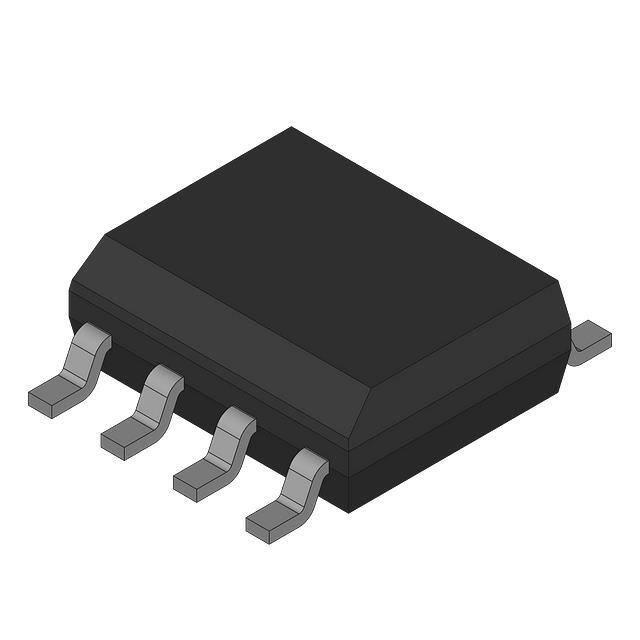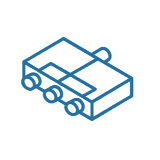Next-Gen Measuring Instruments: Advancements in Accuracy and Efficiency Introduction
In today’s rapidly evolving industrial landscape, precision and efficiency are paramount. As industries embrace automation, digitization, and smart technologies, the role of measuring instruments has never been more critical. The next generation of measuring instruments promises unprecedented accuracy, faster data acquisition, and smarter data processing, revolutionizing fields ranging from manufacturing and energy management to environmental monitoring and healthcare. This article explores the cutting-edge advancements in measurement technology, their transformative impact on various industries, and the emerging trends that are reshaping the future of precision measurement.
1. Digital Transformation in Measurement Technology
The shift from analog to digital measurement systems has been a game-changer in industries worldwide. Digital measuring instruments are increasingly replacing traditional mechanical and analog counterparts due to their higher precision, greater flexibility, and ability to integrate seamlessly with digital ecosystems.
Key Developments:
- Enhanced Data Acquisition: Digital instruments, powered by advanced sensors and microprocessors, provide higher levels of precision by capturing and processing data at unprecedented speeds. This ensures minimal human error and more reliable results.
- Real-time Data Transmission: With the advent of IoT (Internet of Things), many modern measuring instruments come equipped with wireless communication capabilities, allowing real-time data transfer to central systems for immediate analysis and decision-making.
- Integration with Cloud Computing: The digital nature of modern instruments allows for easier integration with cloud platforms, enabling remote access, real-time monitoring, and data storage. This has greatly expanded the functionality of measuring instruments, particularly in industries that require continuous monitoring, such as energy production and environmental monitoring.
2. Precision Measurement: Pushing the Limits of Accuracy
The accuracy of measuring instruments has always been a defining feature of their usefulness in critical applications. In the next-generation instruments, advancements in sensor technologies and algorithms are pushing the limits of what was once considered possible.
Key Advancements in Precision:
- Nano-scale Sensors: Sensors capable of measuring at the nanometer scale are becoming more accessible, especially in fields like material science, nanotechnology, and semiconductor manufacturing. These sensors enable precise measurements of material properties, thickness, and surface roughness with extremely high sensitivity.
- Laser Measurement Systems: Laser-based measuring instruments, such as laser distance meters and laser interferometers, offer unparalleled accuracy in non-contact measurement applications. They are used in industrial automation, aerospace, and high-precision manufacturing.
- Multifunctional Sensors: The development of sensors capable of measuring multiple parameters simultaneously, such as temperature, pressure, and humidity, without requiring separate devices, is improving measurement efficiency. These multifunctional sensors are widely used in environmental monitoring, industrial process control, and medical diagnostics.
3. Smart Measurement Instruments: Enhancing Efficiency with Artificial Intelligence
The integration of artificial intelligence (AI) and machine learning (ML) algorithms into measuring instruments is a breakthrough that significantly enhances both the efficiency and capabilities of these devices. Smart instruments can process large volumes of data in real-time, learn from patterns, and optimize performance without human intervention.
Key Innovations in Smart Measurement:
- Predictive Analytics: Modern measuring instruments equipped with AI algorithms can not only measure but also predict future trends based on historical data. For example, in predictive maintenance, AI can analyze data from sensors in industrial machinery to identify signs of wear and tear before they lead to system failure.
- Automated Calibration: Traditional measurement systems require manual calibration, which can be time-consuming and prone to errors. Smart instruments can automatically adjust their settings for optimal performance, reducing downtime and human involvement in the process.
- Adaptive Sensors: Smart sensors are capable of adjusting their sensitivity and measurement range based on environmental conditions. This dynamic adaptability ensures accurate measurements in ever-changing environments, making these instruments ideal for applications in fields such as aerospace, automotive, and medical diagnostics.
4. Wireless and Remote Measurement Systems: Breaking New Boundaries
Wireless and remote measurement systems are rapidly becoming indispensable in industries that require monitoring in hazardous or hard-to-reach locations. These systems offer a high degree of flexibility and cost-effectiveness, especially for applications in oil & gas, mining, and power generation.
Key Trends in Wireless Measurement:
- IoT-enabled Sensors: The integration of IoT sensors into measuring instruments allows for remote monitoring of parameters such as temperature, vibration, and pressure. This capability is particularly beneficial in harsh environments where human intervention is limited or dangerous.
- Edge Computing: By incorporating edge computing into measurement systems, real-time data can be processed directly at the source, reducing latency and bandwidth usage. This is particularly useful in industrial IoT applications where quick decision-making is crucial for operational efficiency and safety.
- Energy Harvesting Sensors: One of the challenges of wireless measurement systems has been the need for frequent battery replacements. Next-gen instruments are now equipped with energy-harvesting technology, which powers sensors using environmental energy such as solar, heat, or motion. This increases the reliability and autonomy of wireless systems, especially in remote locations.
5. Industry-Specific Applications of Next-Gen Measuring Instruments
The advancements in measuring instruments are not just theoretical—they are having a profound impact across a wide array of industries. Here’s how next-gen instruments are driving innovation in specific sectors:
Manufacturing & Automation:
- Inline Process Monitoring: Automated quality control systems in manufacturing are increasingly relying on precise measurement instruments to monitor parameters such as part dimensions, surface quality, and material composition. Instruments equipped with advanced vision systems and laser measurement technologies are used to ensure products meet stringent quality standards.
Energy & Utilities:
- Smart Grid Integration: In the energy sector, smart meters and measurement devices help utilities optimize energy consumption, reduce waste, and manage load distribution more effectively. These instruments provide real-time data on energy use, enabling dynamic pricing and more efficient grid management.
Environmental Monitoring:
- Air and Water Quality Monitoring: Advanced sensors are being used to monitor pollutants in air and water, providing real-time data for regulatory bodies and environmental agencies. These instruments help track pollutants like CO2, NOx, and particulate matter, enabling better policy decisions to protect public health.
Healthcare & Life Sciences:
- Point-of-Care Diagnostics: In healthcare, portable and highly accurate measuring instruments are revolutionizing diagnostic processes. Devices like glucose meters, blood pressure monitors, and oxygen saturation monitors are now more accurate and user-friendly, improving patient outcomes and facilitating remote care.
6. Future Trends: The Road Ahead
As technology continues to advance, the future of measurement instruments looks promising. Some of the key areas to watch for in the coming years include:
- Quantum Sensing: Quantum technologies promise to revolutionize precision measurement by allowing for measurements at the atomic and subatomic levels. Quantum sensors could achieve previously unimaginable accuracy, making them valuable in fields like fundamental physics, geophysics, and GPS systems.
- Blockchain for Data Integrity: Blockchain technology may be incorporated into measuring instruments to ensure the integrity and traceability of measurement data. This is particularly important in industries like pharmaceuticals, where precise measurement and data security are crucial for regulatory compliance.
The next generation of measuring instruments is marked by transformative advancements in accuracy, efficiency, and intelligence. From high-precision sensors to smart, wireless, and AI-powered systems, these instruments are driving innovation across various industries. As technology continues to evolve, we can expect even greater strides in measurement capabilities, with implications for productivity, sustainability, and overall industry performance. Embracing these innovations will be key for businesses looking to stay competitive in an increasingly data-driven world.
The future of measuring instruments is not just about getting the right numbers—it’s about making those numbers work smarter, faster, and more efficiently than ever before.


